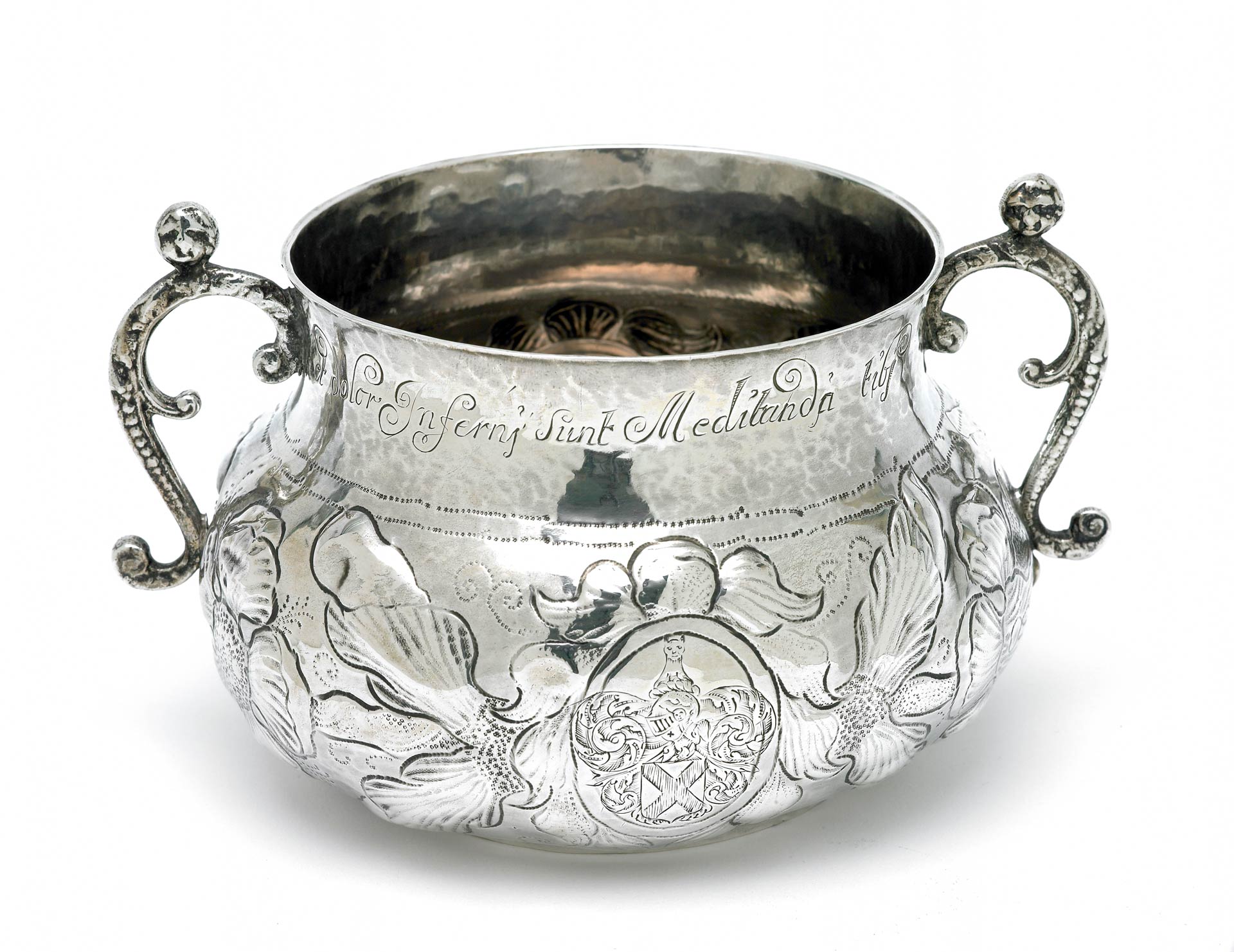Silversmiths of Hull
We have a fascinating collection of silverware made in Hull, dating back to the 1600s. The collection includes mainly spoons, tankards, and porringers (double-handled bowls).
You can see just over 50 pieces of Hull silver on display in Wilberforce House Museum. Including the Charles II silver tankard by local silversmith Edward Mangie (c. 1675–76)

The Kings Town
In 1299, King Edward I granted Hull its Royal Charter, and the city became known as "Kings Town". For a short while, Hull had a mint (or coin makers) that produced silver penny coins of the realm. It's likely that gold and silversmiths also worked in Hull around this time. However, the earliest recorded goldsmiths working in Hull were in the fifteenth century. These goldsmiths also produced silverware.
During the sixteenth century gold and silversmiths formed "The Guild of Goldsmiths of Hull". But by the end of the century, demand for their trade reduced. Their status may have also declined. The Guild eventually combined with smiths, pewterers, painters, cutlers, bookbinders and basket makers. Together they formed "The Company of Goldsmiths and Smiths and others of their brethren".
Silver standards
By a royal decree of 1328, the standard for gold and silver items had to match that for coinage. This was known as the sterling standard. Makers sent gold and silver pieces to an "assay office". The assay office would test pieces to make sure their gold and silver content was correct. If the quality of the silver was correct, the piece was stamped with the assay town's mark.
Hull's Mark
In 1363, it was ordered that every smith should have a maker's mark. Makers had to stamp their work after it had been stamped with the assayer's mark. There was just one problem. The only assay centre was in London. So, stamping a maker's mark after the assay was impossible unless the maker took their work to London. To correct this, in 1423, provincial goldsmiths instead had to use their maker's mark and principal town marks. It seems, however, that the marks used to denote Hull never had any official backing.
From the late sixteenth century, the letter H was used to mark some silver pieces. Based on works that still exist today, the maker Peter Carlill was the first to do this in around 1580. A communion cup he produced for Beverley Minster has this mark. In the early seventeenth century, a new stamp mark appeared on locally-made silverware. This stamp shows Hull's town mark of the three ducal coronets in pale within a plain shield.
Luxury and local markets
Hull had merchant princes who could afford luxury gold and silver items. Whether for the adornment of their homes – or themselves! The river Humber also provided access to Lincolnshire. The region became a market for Hull's silver, as far south as Lincoln itself.
Closer to home, gold and silversmiths had plenty of competition from beyond the city. Often, important and valuable orders were sent to companies in London. While smiths in nearby York took those of a lesser value.
However, there was still local support for Hull goldsmiths and their standard of craftsmanship. Many local clergymen placed orders for church plates. Other orders came from local Corporations and wealthy individuals.

